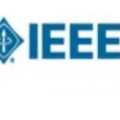We revisit the problem of Pauli shadow tomography: given copies of an unknown $n$-qubit quantum state $\rho$, estimate $\text{tr}(P\rho)$ for some set of Pauli operators $P$ to within additive error $\epsilon$. This has been a popular testbed for exploring the advantage of protocols with quantum memory over those without: with enough memory to measure two copies at a time, one can use Bell sampling to estimate $|\text{tr}(P\rho)|$ for all $P$ using $O(n/\epsilon^4)$ copies, but with $k\le n$ qubits of memory, $\Omega(2^{(n-k)/3})$ copies are needed. These results leave open several natural questions. How does this picture change in the physically relevant setting where one only needs to estimate a certain subset of Paulis? What is the optimal dependence on $\epsilon$? What is the optimal tradeoff between quantum memory and sample complexity? We answer all of these questions. For any subset $A$ of Paulis and any family of measurement strategies, we completely characterize the optimal sample complexity, up to $\log |A|$ factors. We show any protocol that makes $\text{poly}(n)$-copy measurements must make $\Omega(1/\epsilon^4)$ measurements. For any protocol that makes $\text{poly}(n)$-copy measurements and only has $k < n$ qubits of memory, we show that $\widetilde{\Theta}(\min\{2^n/\epsilon^2, 2^{n-k}/\epsilon^4\})$ copies are necessary and sufficient. The protocols we propose can also estimate the actual values $\text{tr}(P\rho)$, rather than just their absolute values as in prior work. Additionally, as a byproduct of our techniques, we establish tight bounds for the task of purity testing and show that it exhibits an intriguing phase transition not present in the memory-sample tradeoff for Pauli shadow tomography.
翻译:暂无翻译



